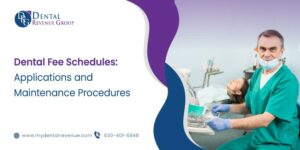Case acceptance is a critical factor in the success of any dental practice. Unfortunately, statistics show that dentists in the US are at the top of the list of health practitioners that people don’t visit as often as they should. Even patients who visit the dentist have low dental case acceptance rates, making it challenging for dental practices to boost their revenue. However, with the right practice management and imaging solution, it’s possible to increase case acceptance rates significantly. Increasing case acceptance is not only essential for the financial health of the practice but also enables patients to receive the treatment they need for optimal oral health.
Reasons for Patient Rejection of Dental Treatment Plans
Regular dental care is vital, yet many Americans avoid dental treatment altogether. Several reasons contribute to patients’ rejection of dental treatment plans, affecting dental cash acceptance. A significant factor is a lack of insurance coverage. According to the National Health Interview Survey, only 50.2% of adults aged 18 to 64 in the US have dental insurance. Additionally, an estimated 37 million individuals over 65 don’t have dental coverage. Patients who lack sufficient insurance coverage may struggle to afford dental care.
Some patients have dental insurance, particularly for extensive treatments where patients are expected to pay 50% or more of the bill out of pocket. The price is often a significant factor in patient refusal of treatment. Fear of pain and dental work can also contribute to patients rejecting dental treatment plans. Negative past experiences or worries about being lectured by a dentist may deter patients from scheduling appointments.
Effective Ways to Increase Case Acceptance In Your Dental Practice
Here are some effective ways to increase case acceptance in your dental practice:
Create a positive cash acceptance.
Creating a positive cash acceptance experience is crucial in building strong patient relationships. Patients will likely form opinions about your dental practice long before they enter your office. It’s important to make it easy for patients to obtain the information they need to feel confident about their decisions. Nearly 75% of prospective patients visit a provider’s website before a visit. To make a good impression on potential patients, consider adding a 24/7 live chat feature on your website to answer questions and collect all necessary information to schedule an appointment with your team. By being readily available to assist, you’re establishing trust and confidence.
Another way to create an excellent impression before a patient’s first visit is by making a personal call. Identify the biggest cases for the next day and assign a team member to call the patient and let them know that the dentist or hygienist is looking forward to meeting them. Even if the provider reaches the patient’s voicemail, it’s a great opportunity to show a commitment to customer service and generate positive feelings towards your practice. Making the extra effort to connect with patients shows that you value them and their dental care.
Building an emotional connection
Building an emotional connection is vital in improving dental cash acceptance. People tend to make decisions based on their feelings and impressions of your practice. If patients like you and feel a connection with your dental team, they are more likely to do business with you and entrust their oral health to your care.
Each interaction between your team members and patients influences their perception of your practice. It’s important to start building rapport by making the patient feel comfortable and valued. Engage with the patient by asking about their day, complimenting, or finding common ground during your conversation. Transition the discussion into asking questions about their visit and displaying natural empathy and compassion. Cultivating a friendly and empathetic atmosphere helps patients feel at ease and valued, which increases their trust in your expertise and services. This emotional connection fosters patient loyalty, increasing dental cash acceptance and a thriving practice.
Explain the diagnosis clearly
The crucial step in increasing case acceptance is to educate the patients about their diagnosis. Use simple language and avoid using clinical terms that patients may not understand. Explain the consequences of delaying or avoiding treatment so patients can make informed decisions about their oral health. Always offer flexible payment options to patients. Additionally, communicating the value and benefits of the recommended treatment to patients can increase their understanding of investing in their oral health, which can lead to higher levels of dental cash acceptance.
Build patient trust and establish a rapport
Patients are more likely to accept treatment when they feel comfortable and confident with their dentist. Building patient trust requires effective communication, active listening, and showing empathy. Patients need to know that their dentist cares about their health and well-being. Make them feel heard and understood. Use language and terminology your patients can understand, and avoid using dental jargon. Explain treatment options clearly and honestly. Show your patients you care about them by empathizing with their pain or discomfort. Ask them how they feel and show you are invested in their oral health. Follow up with your patients after their visits to ensure they are doing well and answer any follow-up questions they may have.
Use visual aids
A picture is worth a thousand words, and this is especially true when explaining complex dental procedures. Using visual aids such as X-rays, intraoral photographs, and videos can help patients understand their diagnosis, treatment options, and the benefits of proceeding with treatment. Visual aids can help patients understand what is happening in their mouth and what you, as their dentist, recommend. Show patients 3D models of their teeth or jaw to help them understand the structure and function of their mouth. Models can also be used to demonstrate different treatment options. Use videos to explain dental procedures, show patients how to brush and floss properly, or discuss the benefits of other treatment options. Videos can be played in the waiting room or shared on the practice’s website.
Offer financing options
The cost of dental treatments can be a significant barrier for some patients. Offering financing options such as payment plans or third-party financing can help patients afford treatment without financial stress. Some dental practices offer in-house financing programs, where patients can pay for their treatment in instalments. This can be a good option for patients who may not qualify for traditional financing options. By offering financing options, dental practices can make dental treatment more accessible to patients who cannot afford it otherwise. It also allows patients to get the treatment they need without delaying it due to financial constraints.
Use a team approach
The entire dental team plays a vital role in increasing case acceptance. The front desk staff, hygienists, and assistants should be trained to be knowledgeable about the treatment plans and educate patients about the benefits of the procedures. Cross-training team members in different areas of the dental practice can increase flexibility and improve the efficiency of patient care. For example, dental hygienists can be trained to take X-rays, and receptionists can assist with sterilization procedures. Regular team meetings can help align all team members towards the same goals, identify potential concerns or conflicts, and provide opportunities for feedback and open communication. Clearly defining each team member’s responsibilities ensures everyone works together effectively and efficiently. Specific roles and responsibilities can help team members know their areas of expertise and prevent misunderstandings or overlap of duties. A team approach can lead to better staff retention and a more positive work environment.
Re-engage with patients who declined treatment
Patients who previously declined treatment may be more receptive to treatment options if re-engaged carefully. Review their treatment plan, educate them about new advances, and address any underlying concerns or barriers. Reach out to patients who have declined treatment and communicate the importance of the recommended treatment. This can be done through phone calls, emails, or in-person conversations. Ask patients if they have any concerns or questions about the recommended treatment. If any issues caused them to decline treatment, address those concerns and make necessary adjustments to the treatment plan if possible. Explain to patients the potential consequences of not receiving the recommended treatment. If the cost of treatment is a concern for patients, provide financing options and help them understand their payment options. This can make treatment more affordable and encourage patients to accept the recommended treatment.
The Bottom Line
Increasing case acceptance in your dental practice requires a patient-centred approach focused on building trust, educating patients, and providing access to financing. Understanding the patient’s unique needs and concerns is vital in addressing any barriers to treatment. Remember, increased case acceptance not only benefits the financial health of the practice; it also helps patients receive the necessary treatments for their optimal oral health.











